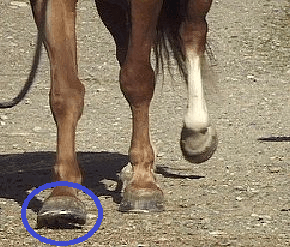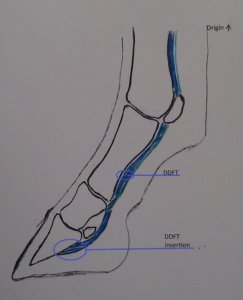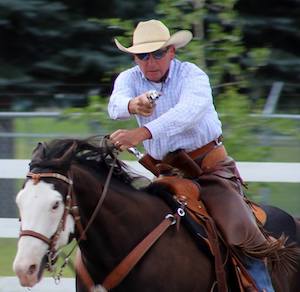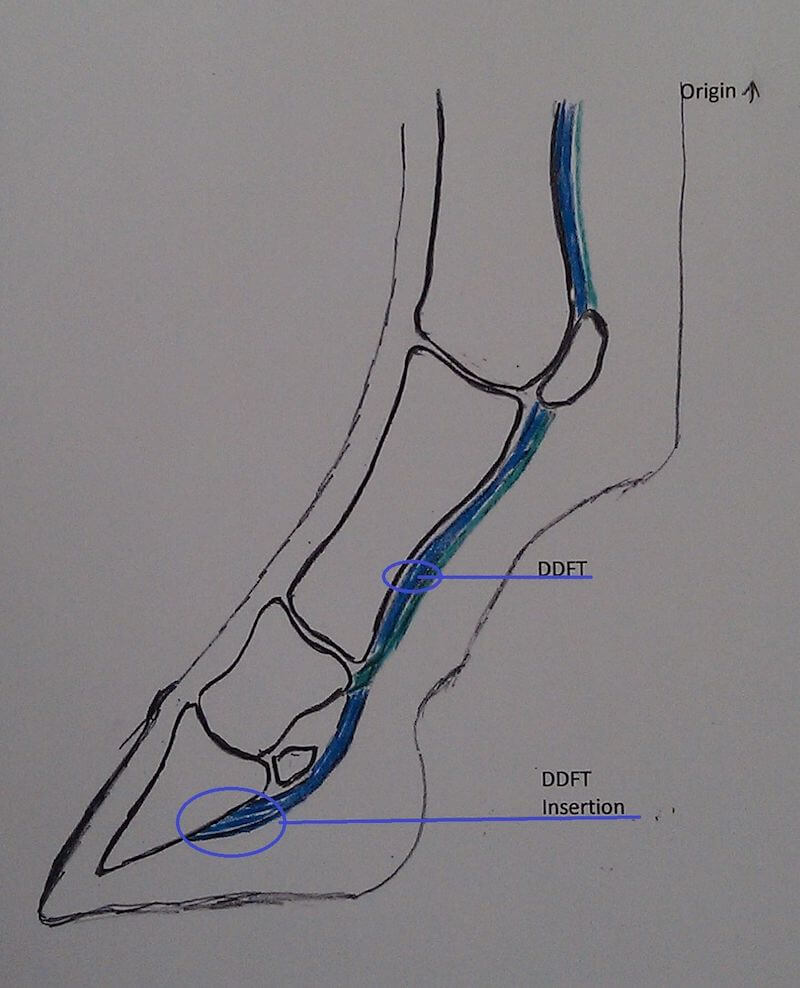Part 1: Understanding Foot Falls
by Mark and Karen Plumlee, Mission Farrier School
This 5-part series, Principles for Evaluating Hoof Health, will give you the basics for evaluating your horse’s hoof health and include, Understanding Foot Falls; Identifying Distortion; Understanding the Sole Plane; What is Breakover; and Load Sharing.

What do we mean by “foot falls” and why do we evaluate them? When we are called in to evaluate a horse, or for even basic trimming or shoeing, the first thing we do is watch the horse move; and we do this every time. As a grazing and flight animal, horses are all about movement. So before we make decisions for trimming or shoeing it is imperative that the hoof care professional watch how the horse moves, specifically how the foot meets the ground. Is the foot reaching out and landing heel first, flat, or toe first? This simple observation will tell you a lot about your horse’s level of comfort.

In my years of specializing in lameness rehabilitation, scores of horses have shown us that a heel-first landing is how a sound horse’s foot meets the ground. To understand this, you’ll need to understand a bit about lower limb anatomy. The Deep Digital Flexor Tendon (DDFT) originates in the flexor muscle of the radius (forearm) and runs down the back of the limb making it’s attachment to the bottom of the coffin bone within the hoof.
Discomfort in the lower limb creates tension in the DDFT and associated muscle. This tension pulls on the bottom of the coffin bone and affects how the foot meets the ground showing us a flat or toe-first landing, as opposed to a relaxed DDFT resulting in the full extension of the limb and a heel-first landing. Tension on the DDFT is simply the horse’s way of taking care of himself; much like your stride would shorten up if you took your shoes off and walked across a gravel drive.
The coffin bone sits within the front half of the hoof capsule. The back half is soft tissue—tendons, ligaments, cartilage, an extensive venous network, nerves, sensitive frog and the digital cushion. In a healthy foot, when the foot meets the ground via a heel-first landing, the load is introduced up through the frog and digital cushion, which supports the entire bone column and, more specifically, lifts and supports the coffin joint (including the navicular bone) up and forward in the hoof capsule.
This subtle movement is important and offers a broad benefit to the soft tissue and support structures though out the hoof. Of particular importance is the unloading of the impar ligament of the navicular bone, as well as reducing tension on the DDFT. As this unloading occurs, a vacuum effect is created by the expansion of the collateral cartilages that moves blood in a manner called hemo-hydraulics. This unloading effect and the movement of blood is how the foot was designed to dissipate concussion.
If a foot lands flat or, even worse, toe-first the internal anatomy of the foot is compressed in a reverse manner by the descending force of the weight placed upon the bone column, which can lead to destructive lameness pathology such as chronic bruising, joint ailments, ligament damage, tendon strain, compromised blood flow, mechanical laminitis and the dreaded navicular disease. It’s my opinion that navicular disease starts here, in the unrecognized lack of a heel-first landing where by the loading forces load down through the impar ligament of the navicular bone.
To best evaluate foot falls, have a helper walk your horse on firm, level ground on a loose lead. Position yourself out in front and a bit to the side and watch as the horse comes toward you at a free walk. Start by picking out just one front foot and watch as that foot meets the ground. You should see a slight flip in the toe as the heel and frog engage the ground first, just as our feet engage the ground when we walk. Normal healthy foot function is for all 4 feet to have a slight heel-first landing.
In summary, a heel-first landing is essential for prolonged healthy foot function. The lack of it is a clear sign of a compromised limb, which will result in unsoundness at some point. A healthy, functional back of the foot dictates the overall health of the foot. Regular observation of foot falls will give you the early warning signs of a potential debilitating lameness.
Published August 2012 Issue

Mark Plumlee is a Certified Journeyman Farrier through the American Farriers Association, a Registered Journeyman Farrier through the Guild of Professional Farriers, and a Certified Barefoot Trimmer, Certified Farrier Practitioner and Certified Lameness Specialist through the Equine Lameness Prevention Organization. These diverse certifications speak to Mark’s commitment to the horse. Mark has published 6 educational DVDs and has been a pioneer in the advancement of farrier education for over 30 years. Mark, with his wife Karen own and operate Mission Farrier School and an Equine layup facility in Snohomish, Washington. They have graduated students from across the United States and 10 foreign countries. For more information visit http://www.missionfarrierschool.com and “Like” them on https://www.facebook.com/MissionFarrierSchool






